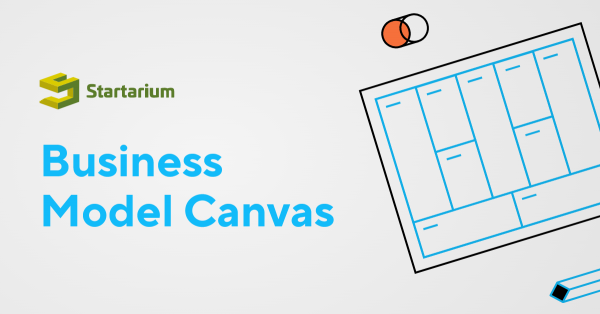The most important resource you own, no matter the business stage you are in, is clarity. Why? Because it helps you get closer to your objective, small step by small step. In order to gain clarity and make progress, you can use some tools to help you. You will learn about 5 of them in this article.

Finding the right direction in entrepreneurship is sometimes a very complicated process – and that is mostly because you always have at hand a multitude of options and scenarios. The process gets even more complicated in times of crisis, such as a global pandemic. And being able to take action instead of freezing is vital. In other words, clarity helps your business or project become resilient – and, if need be, agile. It can also help increase its impact and it acts as a compass when you have to make tough decisions.
So let’s see where you can begin.
What does clarity actually entail?
Sometimes, clarity can be mistaken for a decision. Other times, it may look like an information or an answer, or maybe like a new idea or a solution. Obviously, they all have a contribution to reaching clarity, but what it actually means is something significantly simpler, but tougher to achieve: clarity is ”I know what to do next”. This is most likely the biggest benefit of an incubation or acceleration program for entrepreneurs.
Business Model Canvas
Business Model Canvas is probably the best known instrument you can use for this purpose. You will learn how to fill it in in the following article. However, before diving into the subject, keep in mind that the best way to use is to test and envision multiple scenarios. Place all of them in a visible space and - by yourself or with your team – ask a very important question: which of these models is more viable and why?
Asking yourselves this question will make you think about which of the business models and ”recipes” you’ve sketched generates income more easily or faster and which ones keep your operating costs lower or more predictable. Compare all of them and take something to learn from each of them. Maybe the final business model is actually an average / a collage of all the models you’ve drawn.
Most importantly, after you’ve drawn them, challenge them: ask yourself why do you think one’s better than the other. How objectively true are they and to what extent can you verify their validity?
Especially if you are in a very early stage or in a process of reinventing your business, this question will enable you to identify the things that need checking, those that need testing, who can you talk to and what prototypes or tests are necessary before moving on with your idea.
Five Bold Steps
Five Bold Steps is a tool used to define a business or a project’s vision, no matter the stage it’s in. You can use it just as well if you’re just starting your project or if you are an established business that’s looking to reprioritize its activities.
How does it work:
- Write down all your (and, if it applies, your team’s) ideas and expectations about the project
- Group them considering themes & categories
- Choose the most important 5 topics you all consider relevant to your business’s future
- After you define them, you will be able to define your vision and the boldest 5 steps you can do to reach it.
Incubation or acceleration programs for entrepreneurs
Why is clarity important? Because most good things usually work like inertia does. When entrepreneurs (regardless of their industry) begin, things move slowly. Most of them ask ”How long until this starts working?” or ”How long will I be able to go on?”. There are many difficult moments, but these questions don’t just pop up in startups and young enterprises. They are common in any ambitious project – and challenge the team’s patience and resources. Those who make it are those who quickly understand that an object (or an objective) that is moving is easier to accelerate and if you also push it in the right direction, well, bingo!
And this is probably the biggest challenge. There’s a question that is the number 1 enemy to the clarity we wish to give entrepreneurs through programs. And that is ”What is the right direction?”. The ”fail fast” philosophy may seem attractive, but the reality is that an entrepreneur has a limited number of attempts and we’ve noticed that to many entrepreneurs, caught in the multitude of options, find it harder to finish the sentence ”my next step will be...” even when there are some obvious answers right in front of them.
This is why most programs are actually built around clarity. For example, the purpose of a business modeling workshop isn’t to offer solutions or magic recipes. In our case, they are structured for a w
How to choose the right program? Find out whether it includes a system that supports you in prioritizing your actions, helps you to periodically revisit them and evaluate how responsibly you’ve followed them. This system is very important no matter the stage you find yourself in:
- you’re just beginning and you need to find a way to get accustomed to the entrepreneur life, balancing your personal life in the process
- if you have an existing business but you need to find a way to make it work while keeping an eye on opportunities that are less obvious, but very valuable to your future growth
Strategic Learning
The fourth instrument is strategic learning. More plainly said, the things you learn are not only inspirational, but also very educational and actionable. They can be about the industry you’re in or about business sustainability overall – the bottom line is that they will allow you discover new opportunities and hacks to scale or improve what you deliver, even when you’d least expect it. The most obvious example is the pandemic we are still experiencing - it forced entrepreneurs, regardless of their industry, to get more creative and to act at the height of the crisis, when most people felt stuck.
Mentorship
The fifth instrument is finding a mentor. Their purpose is to accelerate your learning process and get you more quickly to answers that would have otherwise taken a lot more time to reach. Usually, mentors come from the same (or a similar) industry as the mentees.
Their input is valuable because they can offer feedback, challenge your business model or vision and also provide insights on managing a team, supplier relationships and finance issues – basically they can contribute to many aspects that prevent you from achieving clarity or making decisions.
Mentors are the easiest to identify in programs, for example. However, they when you don’t have a specific program at hand, you can drop a line to the people you admire most. Most times, a simple answer is more accessible than we’d expect.























